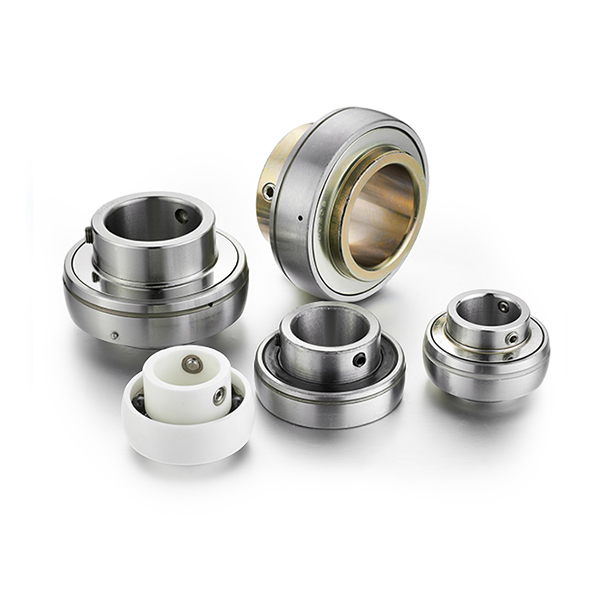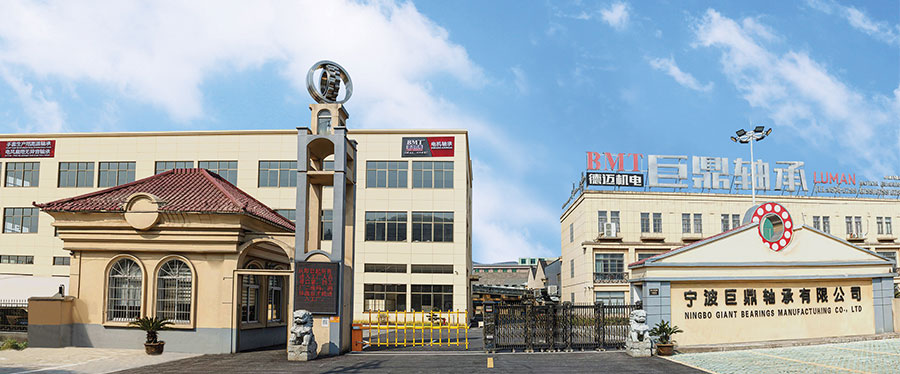
Products are widely used in automotive, lighting, semiconductor, electronics, medicine, energy, aerospace, high temperature furnace, glass and refractory industries!

Material Foundations That Influence Corrosion Resistance in deep groove ball bearings The corrosion and moisture resista...
READ MOREGeneral Considerations for Deep Groove Ball Bearings in Challenging Environments Deep groove ball bearings are widely us...
READ MOREIntroduction to Ball Bearings and Their Durability Ball bearings are mechanical components that facilitate smooth and ef...
READ MOREIntroduction to Deep Groove Ball Bearings Deep groove ball bearings are one of the most widely used types of ball bearin...
READ MOREIn Which Applications Are the Self-Aligning Properties of Self-Aligning Ball Bearings Particularly Advantageous? Self-al...
READ MOREThe role of machinery round bore agricultural deep groove ball bearing in the lighting and semiconductor industries is very critical. Here is a more detailed analysis:
Precision equipment support: During the semiconductor manufacturing process, the equipment requires extremely high precision to ensure the manufacturing quality of the chip. Mechanical round-bore deep groove ball bearings are often used to support precision equipment due to their high precision and low friction characteristics to ensure the precise movement of the equipment during the production process.
Reduced friction and wear: The design of deep groove ball bearings reduces the friction between the rolling elements and the raceways, which helps to reduce energy consumption during equipment operation, while reducing wear and extending the service life of equipment and bearings.
Improved production efficiency: Due to the low friction characteristics of deep groove ball bearings, they can reduce the inertia when the equipment starts and stops, thereby improving production efficiency and response speed.
Stability and reliability: Semiconductor equipment needs to maintain extremely high stability during operation to avoid production errors caused by vibration or displacement. Through its design, deep groove ball bearings can provide stable support and reduce vibration to ensure the continuity and reliability of the production process.
Adapt to harsh environments: The semiconductor and lighting industries may have harsh environmental conditions such as high temperature, high humidity, and high pollution. Deep groove ball bearings are usually sealed to effectively prevent the entry of pollutants and moisture, protecting the bearings from damage.
Easy to maintain and replace: During the production process, the maintenance and replacement costs of equipment are important factors for enterprises to consider. Deep groove ball bearings are easy to install and maintain, which helps to reduce the operating costs of enterprises.
Flexibility and adaptability: Semiconductor and lighting equipment may differ in design and function. The diversity of deep groove ball bearings enables them to adapt to the needs of different equipment and provide customized solutions.
Reduce noise: In the lighting and semiconductor production processes that require a low-noise environment, the low-noise characteristics of deep groove ball bearings help create a more suitable working environment.
Improve equipment accuracy: The high-precision characteristics of deep groove ball bearings help improve the accuracy of the entire equipment, especially in the semiconductor industry, where accuracy is critical to product quality.
Support high-speed operation: In some lighting and semiconductor equipment, high-speed operation is required to improve production efficiency. Deep groove ball bearings can withstand the high load and heat caused by high-speed operation to ensure stable operation of the equipment.
Through these effects, mechanical round hole deep groove ball bearings play a vital role in the lighting and semiconductor industries, not only improving production efficiency and product quality, but also helping to reduce maintenance costs and improve equipment reliability.
In the energy industry, machinery round bore agricultural deep groove ball bearings are widely used in a variety of equipment and systems due to their high load capacity, low friction coefficient, high reliability and long life. Here are some specific application scenarios and detailed analysis:
Wind power generation:
Rotor bearings: The rotor bearings of wind turbines need to withstand huge rotational loads and vibrations. Deep groove ball bearings are often used to support the rotor shaft due to their high load capacity and stability.
Yaw bearings: The yaw system needs to adjust the direction of the wind turbine when the wind direction changes. Deep groove ball bearings provide smooth rotation and precise positioning in this process.
Hydropower generation:
Turbine bearings: The turbine will generate huge water pressure and mechanical loads when it is running. Deep groove ball bearings can withstand these loads and ensure the stable operation of the turbine.
Generator bearings: The bearings of hydroelectric generators need to work stably in high humidity environments. The seal design of deep groove ball bearings can effectively prevent the intrusion of moisture and pollutants.
Oil and gas industry:
Drilling equipment: During the drilling process, deep groove ball bearings are used to support rotating equipment such as turntables and top drives to ensure the precise positioning and stable rotation of the drill bit.
Delivery pumps: During the oil and gas transportation process, deep groove ball bearings are used to support the shaft of the pump, reduce friction, and improve transportation efficiency.
Solar power generation:
Solar tracking system: Solar panels need to adjust their angles according to the position of the sun to maximize energy absorption. Deep groove ball bearings provide smooth rotation and precise positioning in this system.
Coal and mining:
Conveyor belt systems: In coal and mining, conveyor belt systems are used to transport raw materials. Deep groove ball bearings are used to support the rollers of the conveyor belts to ensure their stable operation.
Nuclear power generation:
Cooling pump bearings: The cooling pumps of nuclear power plants need to operate stably under high temperature and high pressure environments. Deep groove ball bearings can withstand these conditions and ensure the reliability of the pumps.
Tidal power generation:
Underwater equipment bearings: Tidal power generation equipment needs to operate in seawater for a long time, and the corrosion resistance and sealing performance of deep groove ball bearings make them an ideal choice.
Energy storage equipment:
Flywheel energy storage system: The flywheel energy storage system stores energy through a high-speed rotating flywheel, and deep groove ball bearings provide high-speed rotation support and precise positioning in this system.
These application scenarios demonstrate the diversity and importance of mechanical round hole deep groove ball bearings in the energy industry. By selecting appropriate materials, designs and maintenance strategies, the bearings can be ensured to operate stably and long-term under various harsh working conditions, thereby improving the efficiency and reliability of the entire energy system.
Ensuring long-term stable operation and performance optimization of machinery round bore agricultural deep groove ball bearings is an important technical and management issue involving industrial applications. The following are some key measures and methods:
Correct installation and adjustment:
The long-term stable operation of mechanical round hole deep groove ball bearings first depends on the correct installation process. During installation, ensure that the clearance between the bearing and the shaft is appropriate, and no damage or error should occur during the installation process. Appropriate installation tools and technical guidance are the key to ensuring the success of this step.
Proper lubrication management: Lubrication is one of the key factors for the long-term stable operation of bearings. Appropriate lubricants and lubrication methods can effectively reduce friction and wear and extend the service life of bearings. When selecting lubricants, factors such as temperature, speed and load of the working environment should be considered, and lubrication should be checked regularly to ensure that the bearings are well lubricated during operation.
Regular maintenance and care: Bearings are affected by loads and the environment during use, so regular maintenance and care are essential. This includes regular inspections of the operating status of bearings, detection of possible abnormal vibrations or temperature rises, and lubrication changes and component replacements according to the manufacturer's recommendations. Regular maintenance can help identify problems and take timely measures to avoid damage or failure of bearings due to long-term operation.
Environmental control and protection: The working environment of bearings also has an important impact on their stable operation. Exposure of bearings to excessively high or low temperatures, humidity or corrosive media should be avoided as much as possible. If necessary, measures such as closed design or the installation of protective covers can be adopted to protect bearings from the influence of the external environment.
Continuous performance monitoring and optimization: For critical applications, consider implementing a continuous performance monitoring and optimization strategy. Sensors and monitoring systems are used to monitor the operating status of bearings in real time, such as parameters such as temperature, vibration and workload. Through data analysis and predictive maintenance, potential problems can be identified in advance and corresponding preventive measures can be taken to optimize the performance and service life of bearings to the greatest extent.
Through the comprehensive application of the above measures, the stability and performance optimization of mechanical round hole deep groove ball bearings in long-term operation can be effectively ensured, thereby improving the reliability and operating efficiency of equipment.